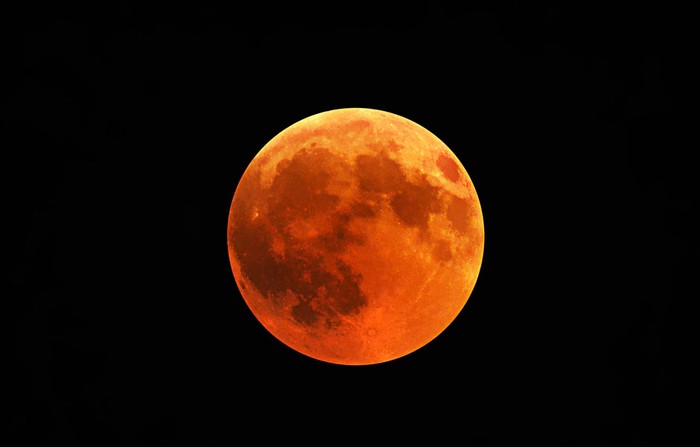
When is the next full Moon? Your lunar astronomy guide
All the information you need to see the Earth’s nearest celestial neighbour at its best this month.
A full Moon is one of the easiest astronomical events to see. You don't need any special equipment to view the Moon, or a star chart to find it – all you need to do is look up on the right night. On top of that, it's also easily one of the most stunning objects in the night sky.
So, whether you're an experienced astronomer or you're keen to start exploring the night sky, read on to find out when you can next see a full Moon in the UK. Or, check out our guide to astronomy for beginners UK for stargazing tips. If you're looking for a more challenging astronomical event to spot, try our meteor shower calendar.
Read more about the Moon:
- Moonfall: Could the Moon really crash into the Earth?
- What is a supermoon?
- The origin of the Moon: a timeline of discovery
When is the next full Moon in the UK?
The next full Moon in the UK will be on 5 May 2023. This will be the Flower Moon.
Full Moons occur roughly once a month. Or to be precise, every 29 days, 12 hours, 44 minutes, and 3 seconds (generally rounded to 29.53 days).
Below are the dates of the full Moons for 2023:
6 January, 11:07pm: Wolf Moon
5 February, 6:28pm: Snow Moon
7 March, 12:40pm: Worm Moon
6 April, 5:34am: Pink Moon
5 May, 6:34pm: Flower Moon
4 June, 4:41am: Strawberry Moon
3 July, 12:38pm: Buck Moon
1 August, 7:31pm: Sturgeon supermoon
31 August, 2:35am: Blue supermoon
29 September, 10:57am: Harvest/Corn Moon
28 October, 9:24pm: Hunter's Moon (partial lunar eclipse)
27 November, 9:16am: Beaver Moon
27 December, 12:33am: Cold Moon
When is the next supermoon in the UK?
1 August: Sturgeon supermoon - 357,530 km away
31 August: Blue supermoon - 357,344 km away
What is the lunar cycle?
The Moon appears to change shape throughout the lunar cycle:
- New Moon
- Waxing crescent Moon
- First Quarter
- Waxing gibbous Moon
- Full Moon
- Waning gibbous Moon
- Third quarter
- Waning crescent Moon
- New Moon again.
We only see the Moon because it reflects light from the Sun. As it orbits the Earth, the amount of light it can reflect back at us changes. When the Moon goes between the Sun and the Earth, no light can reflect back at us so there is a new Moon.
When the Earth is between the Sun and the Moon, a full Moon occurs as the Moon’s face is fully illuminated by the Sun. During the times in between, only parts of the Moon can reflect light back to Earth.

If the Moon orbited Earth in the same plane as Earth orbits the Sun, then the Moon would block out light from the Sun every time there was a new Moon.
But this doesn’t happen because the Moon orbits at an angle of around 5 degrees compared to Earth’s orbit of the Sun. When the Moon passes through Earth’s plane of orbit and the three bodies – Earth, Moon and Sun line up.
More like this
This is called a syzygy. When a syzygy happens during a new Moon we have a solar eclipse, and a syzygy during a full Moon creates a lunar eclipse.
How can I see a Supermoon?
The Moon doesn’t orbit Earth in a circle – it has an elliptical orbit. This means the distance between the Earth and the Moon varies. The closest point in the orbit is called perigee and the furthest away point is apogee.
When a full Moon happens at the same time the Moon is closest to the Earth – less than 360,000km (223,694 miles) away – this is a supermoon. The next supermoon will be on 28 March 2021.
How can I photograph the moon at night?
To capture the Moon with your phone, you might need to play around with your camera settings. Don’t use a flash, turn down the ISO and set your focus to 100.
If you are unsure how to make these changes, download a night photography app (such as NightCap – available on the App Store, £2.99) which will allow you greater control over the camera settings than your usual camera app.

If you’re using a digital camera, start with an aperture of f/11 to f/16 and a shutter speed of between 1/60th and 1/125th of a second. A tripod will help keep your camera still and reduce any shaking from the low light conditions when you need to keep the shutter open a little longer.
To get the best pictures of the Moon you need to work out your shot, making sure you can frame the Moon depending on the scenery around you. To plan where you can see the Moon, or anything in the night sky, there is plenty of software available (like the Moon Locator app – available on Android devices, free).
To find more software worthy of your home screen, check out our guide to the best astronomy apps.
Does the Moon rotate?
Yes, the Moon is rotating. But it is tidally locked, which means it rotates in sync with its orbit of the Earth, so for every orbit of the Earth it completes one rotation.
This means as it travels around our planet, the same side faces us the whole time. This is why we have the term ‘dark side of the Moon’, for the side we never see. In reality, that side of the Moon gets just as much sunlight as the side we see, so the correct term is the ‘far side of the Moon’.
What is a Blood Moon and how can I see it?
"During a total lunar eclipse, the Moon turns a red colour because Earth’s atmosphere scatters blue light away and only the red gets through. This is called a Blood Moon," says Abigail Beall.
The next total lunar eclipse visible from the UK will be on 14 March 2025 (UK, Europe, Africa, Americas, east Asia, Australia).
We have a little while to wait for the next Blood Moon; below are the dates for the next total lunar eclipse that will give us a Blood Moon:
14 March 2025: UK, Europe, Africa, America, east Asia, Australia
7 September 2025: UK, Europe, Asia, Australia
3 March 2026: America, Asia, Australia
31 December 2028: UK, Europe, Asia, Australia, western US and Canada

Read more about the Moon:
Authors

Sponsored Deals

May Half Price Sale
- Save up to 52% when you subscribe to BBC Science Focus Magazine.
- Risk - free offer! Cancel at any time when you subscribe via Direct Debit.
- FREE UK delivery.
- Stay up to date with the latest developments in the worlds of science and technology.




